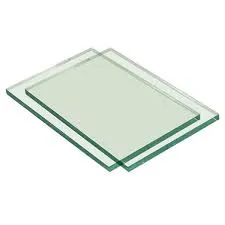Understanding Low Iron Glass An Overview
Low iron glass, often referred to as low iron or ultra-clear glass, is a type of glass that has a reduced iron content compared to standard glass. This unique property results in glass that is significantly clearer and more transparent, making it a preferred choice for various applications, particularly in architecture, display cases, and solar energy solutions.
Composition and Differences
The primary difference between low iron glass and regular glass lies in its composition. Standard glass contains iron oxide, which gives it a greenish tint. This coloration is generally acceptable for many uses but can hinder visibility and the clarity of materials behind the glass. Low iron glass, on the other hand, is manufactured using raw materials with minimal iron content, thereby reducing the green hue and enhancing the transmission of light. This results in a glass that is nearly colorless and often more aesthetically pleasing.
Applications
Due to its remarkable transparency, low iron glass is favored in various applications
what is low iron glass
1. Architectural Uses In modern architecture, large glass facades and windows are commonplace. Low iron glass allows natural light to penetrate deeper into buildings while providing a clear view of the exterior, creating a more inviting atmosphere. This property is especially beneficial in commercial buildings, where maintaining an open and airy feel is essential.
2. Display Cases Museums, art galleries, and retail stores often utilize low iron glass for display cases. The lack of coloration ensures that the items on display, whether they are fine art or valuable merchandise, are showcased without distortion or color alteration. This enhances the visual experience for viewers, allowing them to appreciate the true colors and details of the items.
3. Solar Panels In the renewable energy sector, low iron glass is crucial for solar panels. Its high light transmission helps maximize the efficiency of solar cells by allowing more sunlight to reach the photovoltaic materials. As the demand for sustainable energy rises, the role of low iron glass in improving solar energy technology becomes increasingly significant.
4. Aquariums and Aquatic Displays For aquariums, low iron glass is essential as it provides a clear view of aquatic life without the greenish tint that could detract from the viewing experience. This is particularly important in well-designed aquariums and oceanariums where the visual appeal is paramount.
Conclusion
In summary, low iron glass presents an innovative solution for various industries seeking clarity and aesthetic appeal. Its enhanced transparency not only improves the visual quality of architectural designs and display cases but also plays a pivotal role in advancing solar energy technologies. As trends in design and sustainability continue to evolve, low iron glass will likely remain a popular choice, combining functionality with elegance to meet the demands of modern applications. Whether in a towering skyscraper or a beautifully curated art gallery, low iron glass will shine brightly, offering unobstructed views and a touch of sophistication.
 Afrikaans
Afrikaans  Albanian
Albanian  Amharic
Amharic  Arabic
Arabic  Armenian
Armenian  Azerbaijani
Azerbaijani  Basque
Basque  Belarusian
Belarusian  Bengali
Bengali  Bosnian
Bosnian  Bulgarian
Bulgarian  Catalan
Catalan  Cebuano
Cebuano  Corsican
Corsican  Croatian
Croatian  Czech
Czech  Danish
Danish  Dutch
Dutch  English
English  Esperanto
Esperanto  Estonian
Estonian  Finnish
Finnish  French
French  Frisian
Frisian  Galician
Galician  Georgian
Georgian  German
German  Greek
Greek  Gujarati
Gujarati  Haitian Creole
Haitian Creole  hausa
hausa  hawaiian
hawaiian  Hebrew
Hebrew  Hindi
Hindi  Miao
Miao  Hungarian
Hungarian  Icelandic
Icelandic  igbo
igbo  Indonesian
Indonesian  irish
irish  Italian
Italian  Japanese
Japanese  Javanese
Javanese  Kannada
Kannada  kazakh
kazakh  Khmer
Khmer  Rwandese
Rwandese  Korean
Korean  Kurdish
Kurdish  Kyrgyz
Kyrgyz  Lao
Lao  Latin
Latin  Latvian
Latvian  Lithuanian
Lithuanian  Luxembourgish
Luxembourgish  Macedonian
Macedonian  Malgashi
Malgashi  Malay
Malay  Malayalam
Malayalam  Maltese
Maltese  Maori
Maori  Marathi
Marathi  Mongolian
Mongolian  Myanmar
Myanmar  Nepali
Nepali  Norwegian
Norwegian  Norwegian
Norwegian  Occitan
Occitan  Pashto
Pashto  Persian
Persian  Polish
Polish  Portuguese
Portuguese  Punjabi
Punjabi  Romanian
Romanian  Russian
Russian  Samoan
Samoan  Scottish Gaelic
Scottish Gaelic  Serbian
Serbian  Sesotho
Sesotho  Shona
Shona  Sindhi
Sindhi  Sinhala
Sinhala  Slovak
Slovak  Slovenian
Slovenian  Somali
Somali  Spanish
Spanish  Sundanese
Sundanese  Swahili
Swahili  Swedish
Swedish  Tagalog
Tagalog  Tajik
Tajik  Tamil
Tamil  Tatar
Tatar  Telugu
Telugu  Thai
Thai  Turkish
Turkish  Turkmen
Turkmen  Ukrainian
Ukrainian  Urdu
Urdu  Uighur
Uighur  Uzbek
Uzbek  Vietnamese
Vietnamese  Welsh
Welsh  Bantu
Bantu  Yiddish
Yiddish  Yoruba
Yoruba  Zulu
Zulu 

